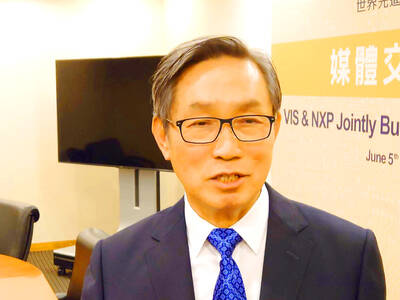Dutch electronics and medical equipment giant Philips said yesterday it had completed the spin-off of its television division to Hong Kong-based LCD screen and computer maker TPV Technology (冠捷).
Philips retains a 30 percent stake, while TPV Technology holds 70 percent in the joint venture, called TP Vision, which will design, manufacture and sell Philips brand TVs throughout most of the world.
“TP Vision will be a strong player in the global TV market and will ensure the continuity of the Philips TV brand in the market,” Philips chief executive officer Frans van Houten said in a statement.
The 3,000 employees and facilities in the Philips TV division will be transferred to TP Vision, which will be headquartered in the Netherlands.
TP Vision will not be able to sell Philips TVs in China, India and the US because the rights to the Philips brand have been sold to other manufacturers.
Philips’ TV unit posted a loss of 54 million euros (US$72 million) in the third quarter of last year amid intense competition from Asian manufacturers.
When announcing the spin-off deal in November last year, Philips said it would take a 270 million euro charge in its fourth quarter earnings in addition to about 110 million euros charged in previous quarters.
Philips, which employs 120,000 people, focused for decades on making televisions and household electrical devices.
About 10 years ago it began developing a medical equipment division, providing such devices as scanners and lighting systems.

TARIFFS: The global ‘panic atmosphere remains strong,’ and foreign investors have continued to sell their holdings since the start of the year, the Ministry of Finance said The government yesterday authorized the activation of its NT$500 billion (US$15.15 billion) National Stabilization Fund (NSF) to prop up the local stock market after two days of sharp falls in reaction to US President Donald Trump’s new import tariffs. The Ministry of Finance said in a statement after the market close that the steering committee of the fund had been given the go-ahead to intervene in the market to bolster Taiwanese shares in a time of crisis. The fund has been authorized to use its assets “to carry out market stabilization tasks as appropriate to maintain the stability of Taiwan’s

STEEP DECLINE: Yesterday’s drop was the third-steepest in its history, the steepest being Monday’s drop in the wake of the tariff announcement on Wednesday last week Taiwanese stocks continued their heavy sell-off yesterday, as concerns over US tariffs and unwinding of leveraged bets weighed on the market. The benchmark TAIEX plunged 1,068.19 points, or 5.79 percent, to 17,391.76, notching the biggest drop among Asian peers as it hit a 15-month low. The decline came even after the government on late Tuesday authorized the NT$500 billion (US$15.2 billion) National Stabilization Fund (國安基金) to step in to buoy the market amid investors’ worries over tariffs imposed by US President Donald Trump. Yesterday’s decline was the third-steepest in its history, trailing only the declines of 2,065.87 points on Monday and

TARIFF CONCERNS: The chipmaker cited global uncertainty from US tariffs and a weakening economic outlook, but said its Singapore expansion remains on track Vanguard International Semiconductor Corp (世界先進), a foundry service provider specializing in producing power management and display driver chips, yesterday withdrew its full-year revenue projection of moderate growth for this year, as escalating US tariff tensions raised uncertainty and concern about a potential economic recession. The Hsinchu-based chipmaker in February said revenues this year would grow mildly from last year based on improving supply chain inventory levels and market demand. At the time, it also anticipated gradual quarter revenue growth. However, the US’ sweeping tariff policy has upended the industry’s supply chains and weakened economic prospects for the world economy, it said. “Now

An employment discrimination lawsuit against contract chipmaker Taiwan Semiconductor Manufacturing Co (TSMC, 台積電) might soon be expanded after a hearing in a federal court in San Jose, California, on Tuesday to add 15 plaintiffs to the case. According to a court document, the lawsuit, which was refiled in November last year as a form of a class action with 13 plaintiffs in California, wants to add 15 plaintiffs from Arizona, where TSMC is building up its wafer fab capacity. TSMC first committed between 2020 and last year to invest US$65 billion in three advanced wafer fabs in Arizona. It then pledged an